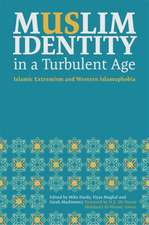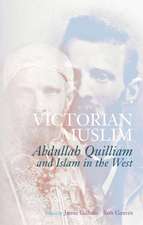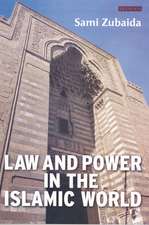Infibulation: Female Mutilation in Islamic Northeastern Africa
Autor Esther Hicksen Limba Engleză Paperback – 31 ian 1996
As Hicks demonstrates, much of the popular resistance to official efforts to eradicate infibulation has actually come from women. Circumcision constitutes a rite of passage for female children. It initiates them into womanhood and makes them eligible for marriage. Often, this is the only positive status position available to women in traditional Islamic societies. Hicks points out that although female circumcision predates the introduction of Islam into the region, the religious culture has successfully codified infibulation into the structural nexus of marriage, family, and social honor at all socioeconomic levels.
Preț: 412.37 lei
Nou
Puncte Express: 619
Preț estimativ în valută:
78.93€ • 82.09$ • 66.14£
78.93€ • 82.09$ • 66.14£
Carte tipărită la comandă
Livrare economică 13-27 martie
Preluare comenzi: 021 569.72.76
Specificații
ISBN-13: 9781560008415
ISBN-10: 1560008415
Pagini: 332
Dimensiuni: 152 x 229 x 25 mm
Greutate: 0.36 kg
Ediția:Rev & Exp Rev &.
Editura: Taylor & Francis
Colecția Routledge
Locul publicării:Oxford, United Kingdom
ISBN-10: 1560008415
Pagini: 332
Dimensiuni: 152 x 229 x 25 mm
Greutate: 0.36 kg
Ediția:Rev & Exp Rev &.
Editura: Taylor & Francis
Colecția Routledge
Locul publicării:Oxford, United Kingdom
Cuprins
Figures, Maps, Plots, and Tables
Preface xi
Introduction
1. Infibulation: Description, Function, and Diffusion
Function: Indigenous and Academic Perspectives
Diffusion
2. The Socioeconomic Distribution of Infibulation
Pastoralism in Northeastern Africa and the Sudan
Pastoral-Rural-Urban Interaction and Infibulation
3. Infibulation in the Social Nexus
Closed Cultural Systems
Islam: A Closed Cultural System
Social Space in Islamic Societies
Gender Identification and Differentiation in Open
and Closed Cultural Systems
The Status Position of Women in Infibulation-Practicing
Societies
Marriage Customs and Laws: An Overview
Male Absenteeism, Sexual Abstinence, Sleeping
Arrangements, and Infibulation
Fertility Levels and Patterns, Mortality and Birthrates,
Sex Ratio Distribution, and Infibulation
4. Methodological Approach and Research Strategy
The Problem of Sources
Sample Selection and Statistical Analysis
Statistical Analysis
The HOMALS-technique
5. Infibulation and the Composite Variables
The Variables Considered
Marriage, Status, and the Practice of Infibulation
Early Marriage and Infibulation
The Composite Variables
6. The Future of Infibulation
Preface xi
Introduction
1. Infibulation: Description, Function, and Diffusion
Function: Indigenous and Academic Perspectives
Diffusion
2. The Socioeconomic Distribution of Infibulation
Pastoralism in Northeastern Africa and the Sudan
Pastoral-Rural-Urban Interaction and Infibulation
3. Infibulation in the Social Nexus
Closed Cultural Systems
Islam: A Closed Cultural System
Social Space in Islamic Societies
Gender Identification and Differentiation in Open
and Closed Cultural Systems
The Status Position of Women in Infibulation-Practicing
Societies
Marriage Customs and Laws: An Overview
Male Absenteeism, Sexual Abstinence, Sleeping
Arrangements, and Infibulation
Fertility Levels and Patterns, Mortality and Birthrates,
Sex Ratio Distribution, and Infibulation
4. Methodological Approach and Research Strategy
The Problem of Sources
Sample Selection and Statistical Analysis
Statistical Analysis
The HOMALS-technique
5. Infibulation and the Composite Variables
The Variables Considered
Marriage, Status, and the Practice of Infibulation
Early Marriage and Infibulation
The Composite Variables
6. The Future of Infibulation
Descriere
Infibulation is the most extreme form of female circumcision











